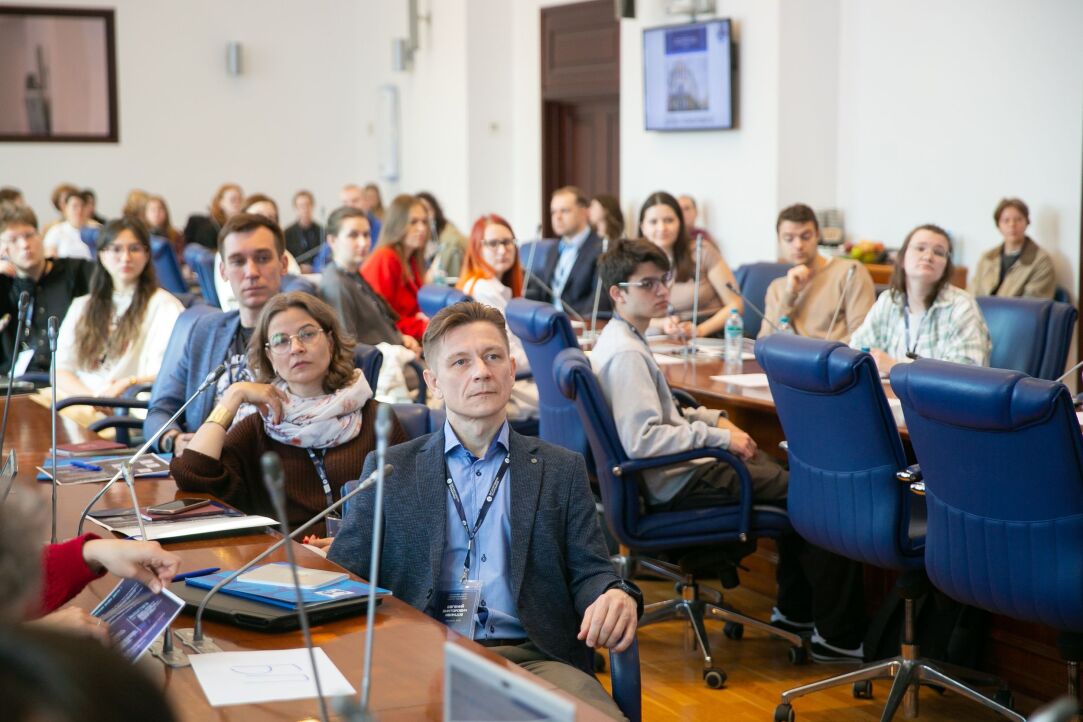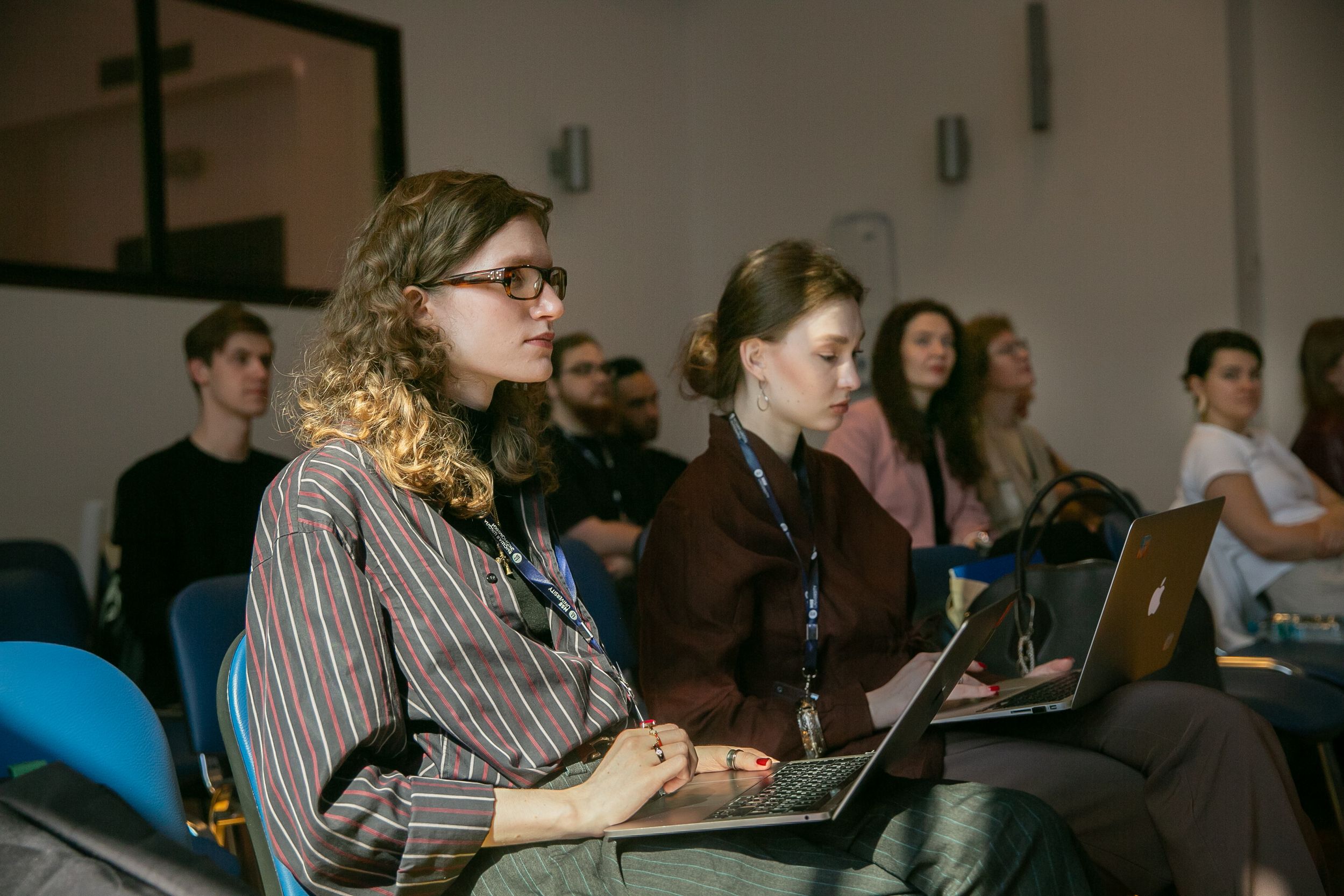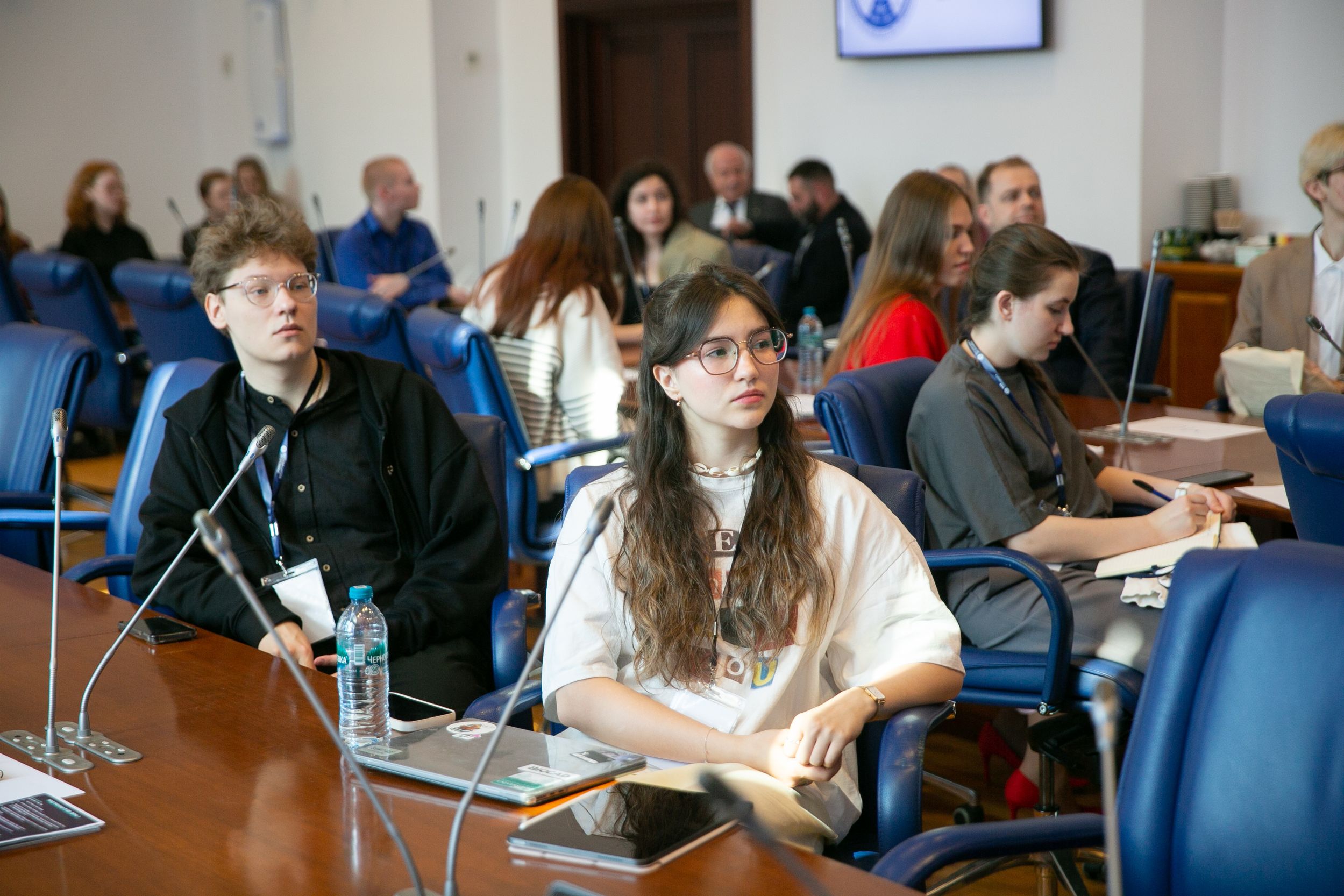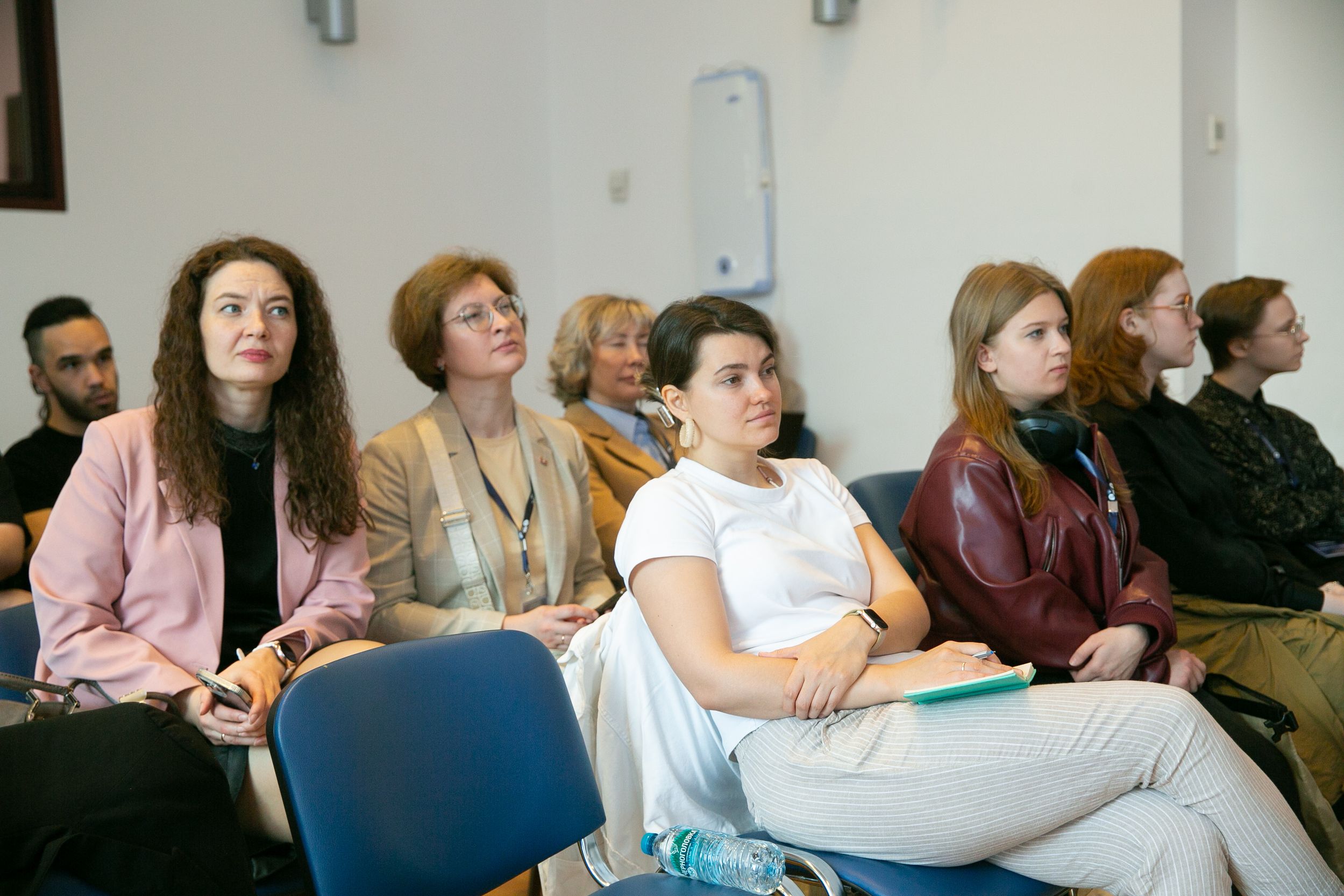When Thoughts Become Movement: How Brain–Computer Interfaces Are Transforming Medicine and Daily Life

At the dawn of the 21st century, humans are increasingly becoming not just observers, but active participants in the technological revolution. Among the breakthroughs with the potential to change the lives of millions, brain–computer interfaces (BCIs)—systems that connect the brain to external devices—hold a special place. These technologies were the focal point of the spring International School ‘A New Generation of Neurointerfaces,’ which took place at HSE University.
One of the key events of the school was a round table dedicated to the use of neurointerfaces in rehabilitative medicine and related fields. The event brought together experts from academia, practising neurosurgeons, neurorehabilitation specialists, and representatives of high-tech industry.
BCIs are already helping patients who have lost limbs or suffered a stroke regain control of their bodies. However, as Galina Ivanova, Chief External Specialist in Rehabilitation at the Russian Ministry of Health, noted, no technology can replace human will. According to her, success is only possible when the patient understands the purpose behind both the entire rehabilitation process and each specific exercise: lifting a cup, embracing a loved one, or returning to a favourite activity. Motivation becomes the fuel that powers this complex system of neurotechnological support for patients. Other participants of the round table also emphasised the importance of strong intrinsic motivation in recovery.
Andrey Davidyuk, head of the company Motorica, knows from experience what it takes to create accessible technology. His team develops thought-controlled prosthetics, turning science fiction into everyday reality. But every achievement is backed by a host of engineering challenges. How do you make sensors reliable in the rain or on sweaty skin? How do you ensure precision in mass production? How do you design a device that feels like an extension of the body, not a burden?
Pavel Bobrov, head of the Laboratory of Mathematical Neurobiology of Learning at the Institute of Higher Nervous Activity and Neurophysiology of the Russian Academy of Sciences, spoke about the crucial task of developing dry electrodes. Many current devices still rely on conductive gels, making them impractical for daily use. Scientists are working to create sensors that offer accurate readings without causing discomfort. This is a particularly important goal for home-based rehabilitation. He also discussed a technology that reads brain activity using near-infrared radiation as an alternative to traditional electrophysiological signals.

Director of Medical Computer Systems LLC, Dmitry Prilutsky, emphasised the complexity of developing medical electrodes that do not require gel, noting that such technological challenges demand a systemic approach and cannot be resolved quickly. He pointed out that while dry electrodes are more convenient to use, their practical application faces several obstacles: discomfort for patients during placement, the quality of the signal being dependent on air humidity (which causes variability across climate zones), and the need for precise placement standards on the patient’s head. As a potential solution, he proposed focusing on the development of automatic electrode placement devices and standardising the electrodes themselves—in terms of diameter and skull attachment zones. This, he argued, would significantly improve the accuracy and consistency of data obtained from brain–computer interfaces under varying operational conditions. Dmitry Prilutsky also elaborated on the features of modern EEG systems, noting that although digital technologies offer increased reliability and data-processing convenience, they still suffer from major drawbacks—namely, high power consumption and poor resistance to interference—which continues to justify the use of gel-based electrodes by specialists.
Natalia Galkina, CEO of Neurotrend JSC, remarked that despite rapid advances in brain–computer interface technologies, gel-based electrodes remain the most reliable method for ensuring high-quality contact with the patient's skin. She explained that current alternatives are limited to solid gel electrodes and dry sensors mounted on neoprene caps—options which do not fully address issues of comfort and measurement accuracy. Natalia Galkina highlighted the importance of ergonomic design in wearable neurodevices and stressed the need for collaboration between engineers and industrial designers to create solutions that are both functional and aesthetically pleasing. She also drew attention to the significant difference between the design requirements for medical equipment used by patients and those for consumer devices intended for healthy individuals. The latter, she noted, must be as compact and user-friendly as possible—for example, in the form of smartwatches. Natalia Galkina expressed concern about the growing presence of low-quality EEG devices on the market, which fail to deliver accurate measurements and risk discrediting the entire concept of brain–computer interfaces in the eyes of consumers. This creates additional obstacles to the advancement of promising technologies and underscores the need for stricter standards and certification protocols.

Roman Lyukmanov, Head of the Neurointerface Group at the Russian Research Centre of Neurology, shared that his team has conducted thousands of rehabilitation sessions using neurointerfaces. As early as 2011, they demonstrated that such technologies can significantly enhance the effect of core rehabilitation therapies. However, when used in isolation and without a comprehensive approach, they may actually slow down recovery. He paid special attention to the issue of motivation: once rehabilitation no longer yields fast and visible results, approximately 80% of patients discontinue the sessions and shift to a strategy of adapting to their limitations. Only around 15–20% persist with the treatment—typically individuals with strong willpower, such as athletes, entrepreneurs, and creative professionals.
‘Everyone is looking for a magic button—they dream of a rehabilitation process that happens automatically, even while they sleep,’ the neurologist remarked. ‘But even the most advanced exoskeleton will not budge unless the patient actively engages. A brain–computer interface demands participation.’
He also spoke about the clinical potential of technologies based on infrared spectroscopy. These are more convenient than traditional methods: they do not require gel and eliminate the need to wash the patient’s head after each session, making them more practical for out-of-clinic use. Most importantly, they accelerate rehabilitation—patients regain fine motor skills more quickly and start feeding, drinking, and caring for themselves independently.
Sergey Shishkin, psychophysiologist and head of the neurocognitive interface group at the Scientific and Educational Centre for Neuro-Cognitive Research (MEG Centre) of Moscow State Psychological and Pedagogical University, spoke about ‘movement without movement—quasi-movements, or mental attempts to move a hand or foot. Even when muscles fail to respond, the brain continues to send signals, and these can be harnessed to control exoskeletons or neural interfaces. This gives patients visible feedback on their effort, restoring a sense of agency and hope for recovery.
Mikhail Sinkin, leading research fellow at the Department of Emergency Neurosurgery at the Sklifosovsky Institute for Emergency Medicine, emphasised the importance of developing non-invasive methods for brain research. He noted that modern technologies for the localisation of functionally important brain regions—developed collaboratively by doctors and scientists—make it possible to obtain accurate data on brain activity without the need for potentially hazardous electrical stimulation. This is especially vital when working with children and patients with epilepsy, for whom traditional invasive procedures pose significant discomfort and risk.
Mikhail Sinkin went on to highlight the advantages of this new approach, which prioritises patient safety while enabling neurosurgeons to fine-tune interfaces according to the individual characteristics of each patient. ‘The main strength of this technology lies in the ability to carry out repeated, pain-free investigations—which is crucial for dynamic monitoring and treatment adjustment,’ explained the expert. According to him, the method opens new doors for personalised medicine, greatly expanding diagnostic capabilities while eliminating risks to the patient.
The participants of the round table also paid special attention to the interdisciplinary nature of this research, where close collaboration between clinicians and scientists ensures solutions that balance scientific innovation with practical utility in real-world clinical settings.
Alexey Sedov, head of the Laboratory of Human Cellular Neurophysiology at the Semenov Federal Research Centre for Chemical Physics of the Russian Academy of Sciences, spoke about the prospects of deep brain stimulation (DBS) for patients with Parkinson’s disease. These techniques offer a modern alternative to destructive surgical interventions and medications that have lost their efficacy. DBS allows for reversible stimulation of specific regions of the cerebral cortex. A significant advantage of this method is its flexibility: the stimulation can be adjusted or completely stopped in the absence of results or if side effects emerge. Moreover, it can be triggered adaptively—for instance, based on a patient’s behaviour or intention to initiate movement.

However, Alexey Sedov noted, the mechanisms of deep brain stimulation are not yet fully understood. For example, different brain regions can respond in markedly different ways to identical stimuli. In some conditions, beneficial effects may take several months to appear, complicating assessment of the method’s efficacy and requiring further study.
Aleksandr Panov, Director of the Laboratory of Cognitive AI Systems at the AIRI Institute, presented key insights on personalised approaches in neuroscience. He emphasised that every patient has a unique set of biomarkers that can be used to predict epileptic seizures and other pathological conditions.
Of particular interest was his proposal to develop adaptive models based on patient data. ‘Once we gather enough data across a patient cohort, we can build a base model and then customise it for each individual using reinforcement learning techniques,’ he explained. This approach opens up exciting possibilities for preventive medicine and highly personalised treatment strategies for neurological disorders.
One of the most inspiring stories was about sensory-enabled prosthetics. Andrey Davidyuk spoke about devices not only controlled by the brain but also capable of conveying information about the external world. Size, shape, texture—all of these become perceptible through the artificial limb. According to him, some users already perceive their prosthesis as an integral part of themselves.

Alexey Ossadtchi, Director of the Centre for Bioelectric Interfaces at HSE University, summarised the round-table discussion: the key to the future lies in a fusion of science, empathy, and engineering talent. Non-invasive interfaces, training programmes tailored to quasi-movements, personalised strategies, and strong motivational support—all of these not only improve quality of life but help restore a person’s sense of self.
At the end of the discussion, participants were invited on a tour of the HSE Institute for Cognitive Neuroscience laboratories, where they were introduced to a unique range of research equipment. The visitors paid special attention to the developments of the Centre for Bioelectric Interfaces, including a real-time biological feedback system, as well as a virtual reality environment where prosthetic limbs are controlled by the patient's muscle activity—allowing users to begin learning how to operate their future prosthesis even before it is physically manufactured. This tour vividly demonstrated how fundamental research is being translated into tangible technological solutions.
See also:
Scientists Test Asymmetry Between Matter and Antimatter
An international team, including scientists from HSE University, has collected and analysed data from dozens of experiments on charm mixing—the process in which an unstable charm meson oscillates between its particle and antiparticle states. These oscillations were observed only four times per thousand decays, fully consistent with the predictions of the Standard Model. This indicates that no signs of new physics have yet been detected in these processes, and if unknown particles do exist, they are likely too heavy to be observed with current equipment. The paper has been published in Physical Review D.
HSE Scientists Reveal What Drives Public Trust in Science
Researchers at HSE ISSEK have analysed the level of trust in scientific knowledge in Russian society and the factors shaping attitudes and perceptions. It was found that trust in science depends more on everyday experience, social expectations, and the perceived promises of science than on objective knowledge. The article has been published in Universe of Russia.
Scientists Uncover Why Consumers Are Reluctant to Pay for Sugar-Free Products
Researchers at the HSE Institute for Cognitive Neuroscience have investigated how 'sugar-free' labelling affects consumers’ willingness to pay for such products. It was found that the label has little impact on the products’ appeal due to a trade-off between sweetness and healthiness: on the one hand, the label can deter consumers by implying an inferior taste, while on the other, it signals potential health benefits. The study findings have been published in Frontiers in Nutrition.
IDLab: Fascinating Research, Tough Deadlines, and Academic Drive
The International Laboratory of Intangible-driven Economy (IDLab) was established at the HSE campus in Perm 11 years ago. Its expertise in data processing and analysis allows researchers to combine fundamental studies with applied projects, including the development of risk and cybersecurity models for Sber. The head of the laboratory, Professor Petr Parshakov, and Senior Research Fellow Professor Mariya Molodchik spoke to the HSE News Service about IDLab’s work.
HSE Psycholinguists Launch Digital Tool to Spot Dyslexia in Children
Specialists from HSE University's Centre for Language and Brain have introduced LexiMetr, a new digital tool for diagnosing dyslexia in primary school students. This is the first standardised application in Russia that enables fast and reliable assessment of children’s reading skills to identify dyslexia or the risk of developing it. The application is available on the RuStore platform and runs on Android tablets.
Physicists Propose New Mechanism to Enhance Superconductivity with 'Quantum Glue'
A team of researchers, including scientists from HSE MIEM, has demonstrated that defects in a material can enhance, rather than hinder, superconductivity. This occurs through interaction between defective and cleaner regions, which creates a 'quantum glue'—a uniform component that binds distinct superconducting regions into a single network. Calculations confirm that this mechanism could aid in developing superconductors that operate at higher temperatures. The study has been published in Communications Physics.
Neural Network Trained to Predict Crises in Russian Stock Market
Economists from HSE University have developed a neural network model that can predict the onset of a short-term stock market crisis with over 83% accuracy, one day in advance. The model performs well even on complex, imbalanced data and incorporates not only economic indicators but also investor sentiment. The paper by Tamara Teplova, Maksim Fayzulin, and Aleksei Kurkin from the Centre for Financial Research and Data Analytics at the HSE Faculty of Economic Sciences has been published in Socio-Economic Planning Sciences.
Mistakes That Explain Everything: Scientists Discuss the Future of Psycholinguistics
Today, global linguistics is undergoing a ‘multilingual revolution.’ The era of English-language dominance in the cognitive sciences is drawing to a close as researchers increasingly turn their attention to the diversity of world languages. Moreover, multilingualism is shifting from an exotic phenomenon to the norm—a change that is transforming our understanding of human cognitive abilities. The future of experimental linguistics was the focus of a recent discussion at HSE University.
Larger Groups of Students Use AI More Effectively in Learning
Researchers at the Institute of Education and the Faculty of Economic Sciences at HSE University have studied what factors determine the success of student group projects when they are completed with the help of artificial intelligence (AI). Their findings suggest that, in addition to the knowledge level of the team members, the size of the group also plays a significant role—the larger it is, the more efficient the process becomes. The study was published in Innovations in Education and Teaching International.
New Models for Studying Diseases: From Petri Dishes to Organs-on-a-Chip
Biologists from HSE University, in collaboration with researchers from the Kulakov National Medical Research Centre for Obstetrics, Gynecology, and Perinatology, have used advanced microfluidic technologies to study preeclampsia—one of the most dangerous pregnancy complications, posing serious risks to the life and health of both mother and child. In a paper published in BioChip Journal, the researchers review modern cellular models—including advanced placenta-on-a-chip technologies—that offer deeper insights into the mechanisms of the disorder and support the development of effective treatments.


